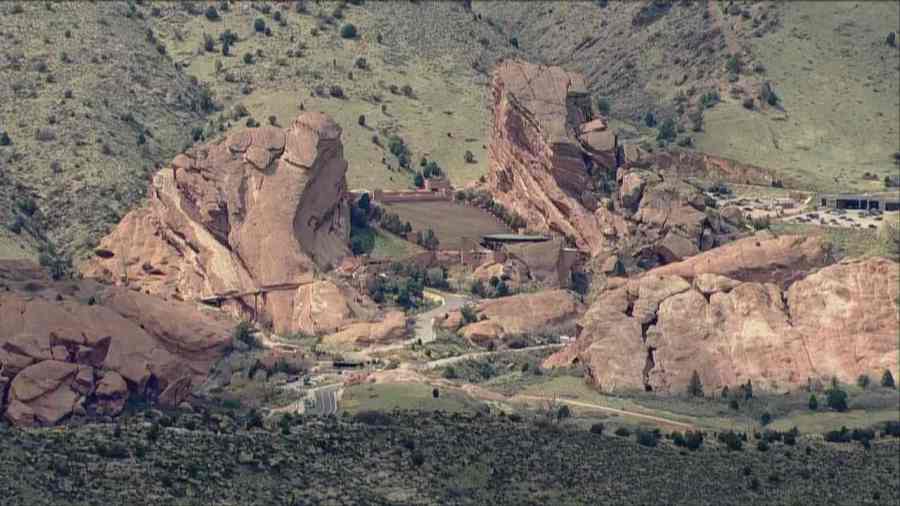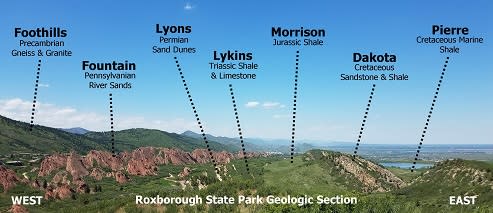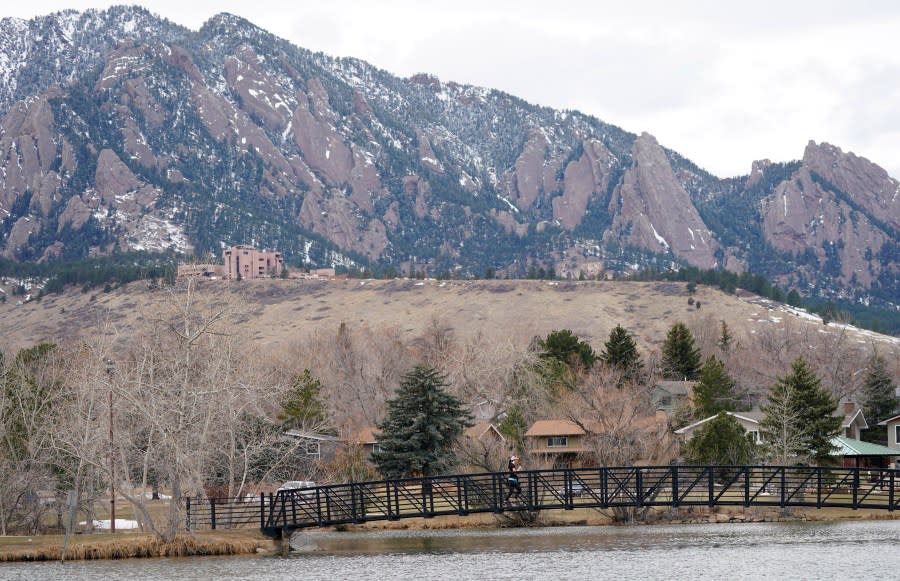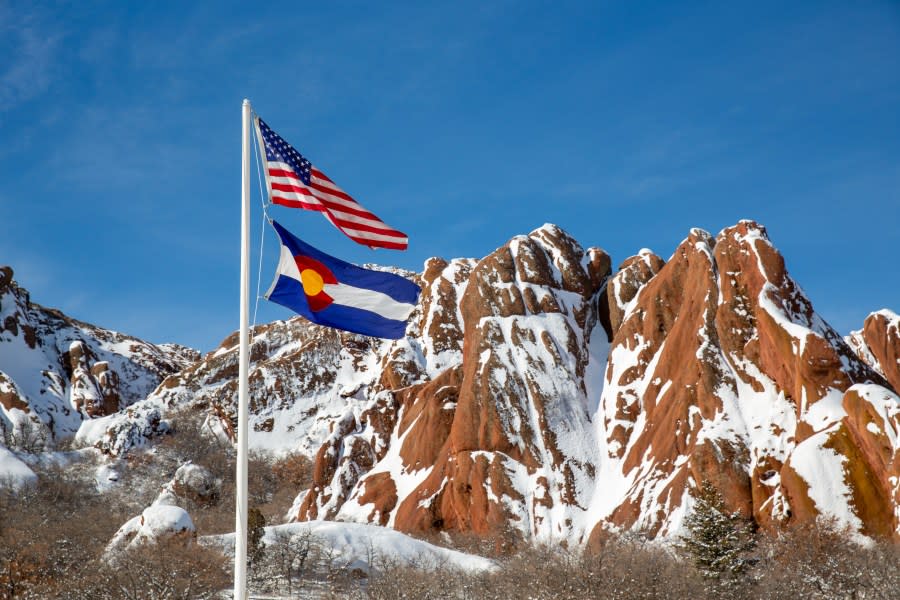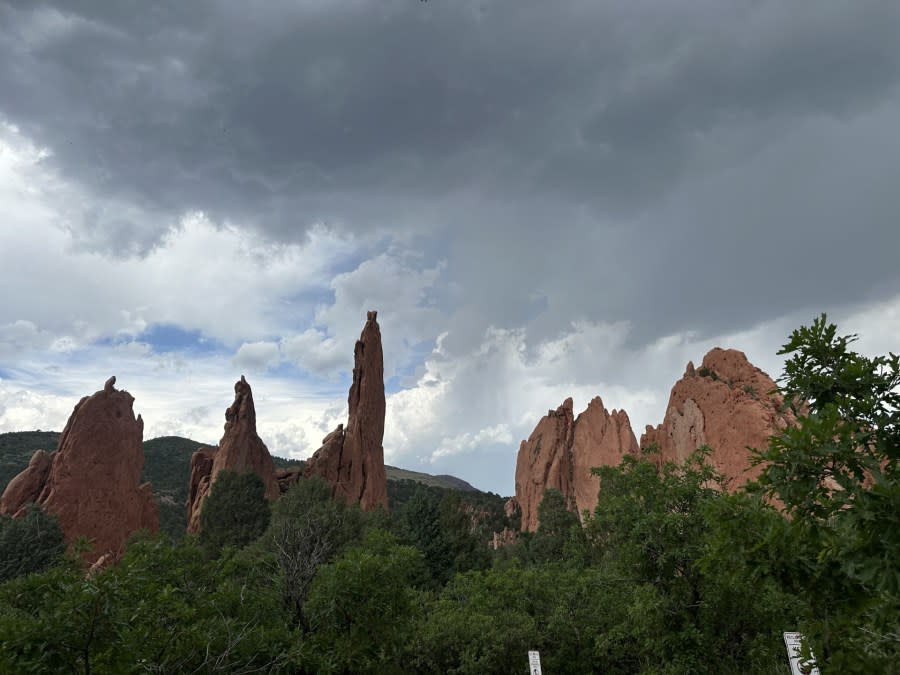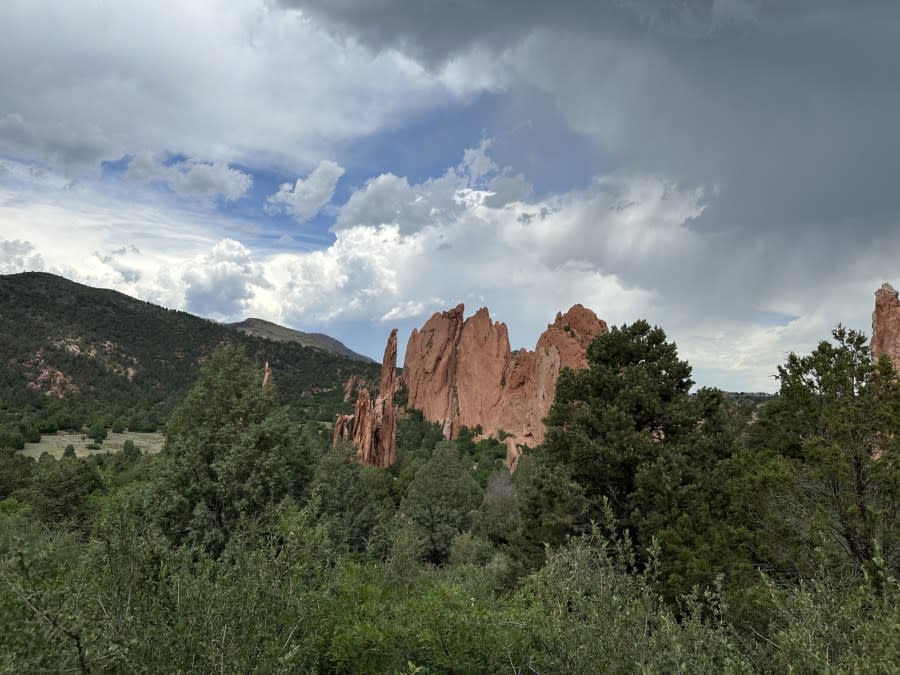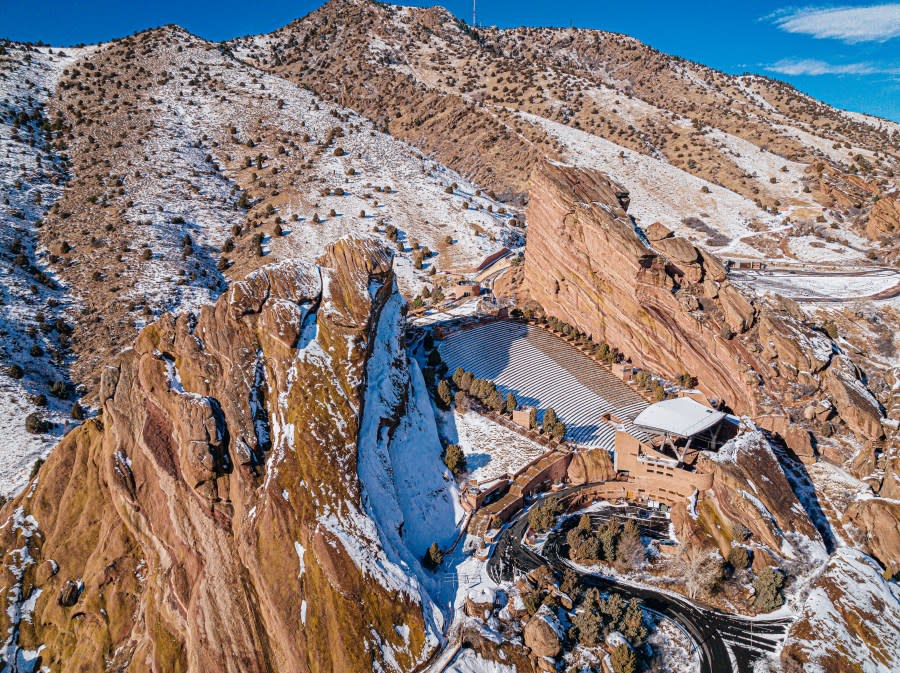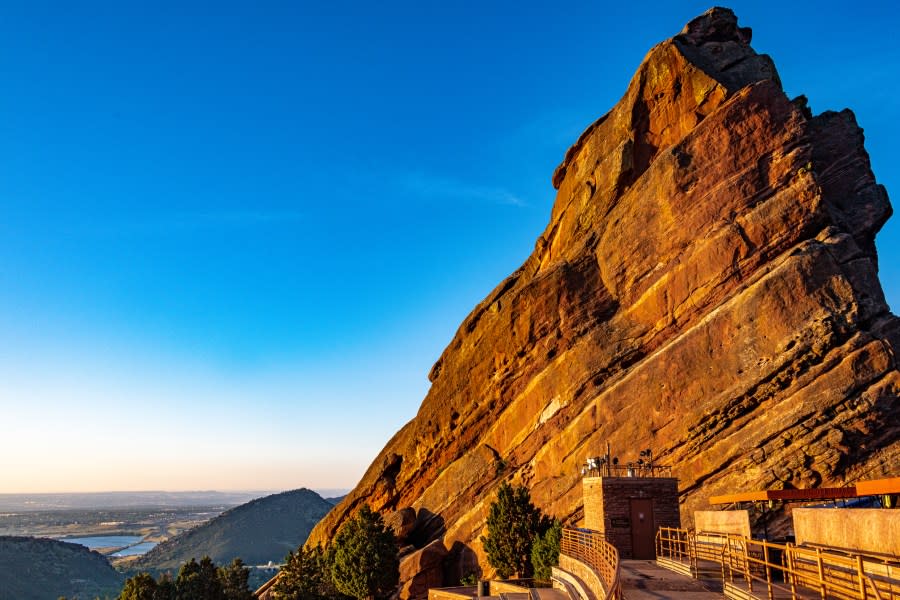Red Rocks geology: How the world’s only natural amphitheater was formed
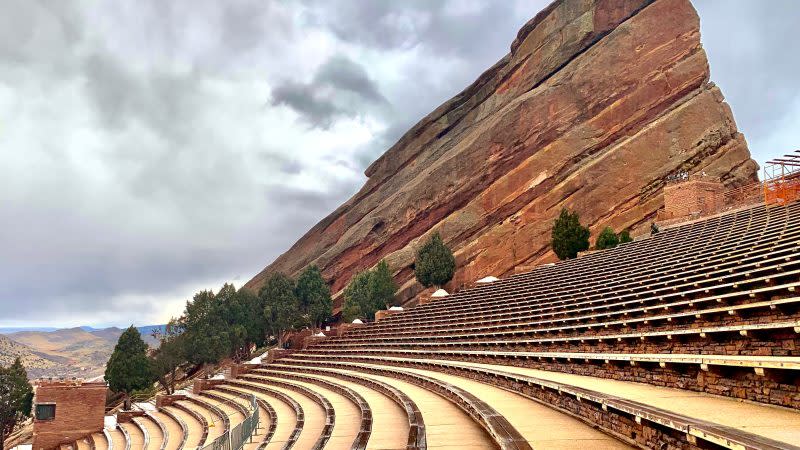
DENVER (KDVR) — Thousands of people attend concerts for their favorite artists every year at Red Rocks Amphitheatre in Denver — the “only naturally-occurring, acoustically perfect amphitheater in the world,” according to the website.
But long before it became a stage that artists dream of performing on and fans travel hundreds of miles to visit, before the area was home to the Ute, Cheyenne and Arapaho Peoples, Red Rocks was home to dinosaurs and was, at one point, under inland seas.
Former guitarist for Red Hot Chili Peppers accused of distracted driving in pedestrian’s death
According to the Colorado Geological Survey, the Centennial State is a particularly fascinating place for geologists. Samuel F. Emmons, a geologist who surveyed places in the western U.S. in the late 1800s, said, “On all the broad extent of these United States, certainly no region can be found which presents more facts of interest, more opportunities for investigation, and greater possibilities, than the State of Colorado.”
The massive slabs of red rock that make up the amphitheater are the result of hundreds of millions of years of forces like geologic uplifts, erosion, the rise and fall of inland seas, and the emergence of the Golden Fault, which stretches along the Front Range, according to the Red Rocks Park and Amphitheatre website.
Here is a geologic timeline of how the beloved concert venue came to be, according to the Red Rocks website.
Ancient seas and the early Rocky Mountains
Around 300 million years ago, the first Rocky Mountains emerged from ancient inland seas. Those mountains paralleled today’s Front Range, about 30 to 40 miles west. Around that time, Colorado was surrounded by ancient seas that rose and fell, and the sandy beaches became sandstone formations over millions of years.
‘Not in our name’: Some clergy rebuke Ten Commandments law
Over millions of years, those mountains were eroded by rivers and glaciers that washed the mountain range away, according to the Red Rocks Online website. About 40 million years after the first Rockies emerged, the mountains were essentially dispersed by the elements.
The remnants of the early Rocky Mountains became the base of the modern-day Rocky Mountains as they emerged about 65 million years ago.
Fountain Formation created slew of Front Range landmarks
The sedimentary rock that eroded from the early Rocky Mountains was deposited in large alluvial fans, and that layer of rock is now called the Fountain Formation.
“Forty million years after they surfaced, the first Rockies were gone. Rivers carried their sediment eastward, creating first the Fountain Formation and later the Lyons, Morrison, Dakota and other, newer formations deposited atop the Fountain. The uplifting of the current Rockies turned the Fountain formation bed on its edge so water and wind could sculpt the modern Red Rocks,” the Red Rocks website reads.
The Fountain Formation makes up the large red rock slabs that surround the amphitheater today. The same formation created the Flatirons west of Boulder, Sanitas Ridge, Roxborough State Park, and Garden of the Gods in Colorado Springs.
A lone jogger moves across a bridge over the lake in Harlow Platts Community Park with the Flatirons in the background Thursday, March 25, 2021, in Boulder, Colo. (AP Photo/David Zalubowski) US flag in front of red rock formation at Roxborough State Park in Colorado Red rocks at Garden of the Gods with storm clouds seen on June 8, 2024. (Brooke Williams) Red rocks at Garden of the Gods with storm clouds seen on June 8, 2024. (Brooke Williams)
Pizza chain in Carolinas ‘exploring all options’ amid bankruptcy rumors
“These enormous rock gardens were built by water, wind and ice that wore down the ancestral range,” the Red Rocks website states.
Not all rocks from the Fountain Formation are red, however. They can vary from light gray to pale red to dark rust.
“Weathering decomposes the rock, releasing minerals such as iron, which oxidizes to give rock a reddish-pink color. During burial and compaction of the Fountain Formation, iron-rich groundwater percolated through the rock leaving behind great rust-colored swirls,” the Red Rocks website states.
Aerial drone view of Red Rocks Park and the Red Rocks Amphitheater near Denver Colorado Early morning sun on Creation Rock in Red Rocks Mountain Park
BMW recalls more than 390,000 vehicles with airbags that could explode
The formations today inspire beauty and wonder for people everywhere. In fact, Red Rocks Amphitheatre was once considered one of the Seven Wonders of the World.
Today, Red Rocks Amphitheatre is not just a beloved concert venue, it is evidence of a mountain range older than the Rockies.
Copyright 2024 Nexstar Media, Inc. All rights reserved. This material may not be published, broadcast, rewritten, or redistributed.
For the latest news, weather, sports, and streaming video, head to Queen City News.
